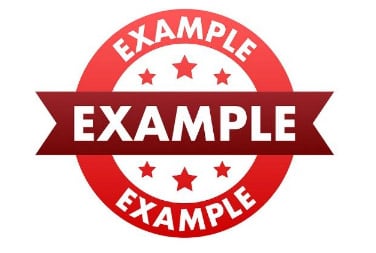👥 250,000 Trained
🏆 9 x Award Winners
⭐ 96% Review Rating
📈 24 Years of Proven Results
Written by Sean McPheat | 

If you want better answers, ask better sales questions — especially early in the sales process when you’re trying to create rapport with a potential customer or client.
When you ask the right kinds of questions during discovery calls, you make a great impression and set a positive tone for future conversations.
What kinds of questions should you ask, though? How do you engage your prospects and get them interested in what you’re selling?
Below, we’re sharing a collection of 34 sales discovery call questions to help you build relationships and get your prospects talking.
Contents

Before we get into specific discovery call questions, let’s go over the basics. For example, what is a discovery call?
A discovery call is an initial conversation that a salesperson has with a prospective customer or client — i.e., someone who has shown an interest in their products or services.
During a discovery call, the salesperson learns more about the potential buyer, including their priorities and goals, as well as the specific pain points the seller’s product or service might resolve.
Discovery calls play a critical role in the sales process. If you’re bombing every sales call, you’ll struggle to follow through and close many — if any — deals.
A productive discovery call can help you accomplish the following:
Put simply, a productive discovery call increases your chances of having more productive conversations in the future. When you start your relationship with a potential customer or client on a positive note, you’re more likely to maintain a positive relationship and, eventually, convert them from a prospect to a paying customer or client.

What kinds of discovery questions should you ask to achieve outcomes like those listed above?
It depends on what you want to accomplish.
For example, if you want to identify pain points, you’ll need to ask different questions than if you want to learn about someone’s budget. Quality Sales Training Courses should always spend a lot of time on improving your discovering call questions.
Below, you’ll find several different types of discovery call questions, broken down by category:
Discovering a prospect’s wants and needs is one of the first steps to qualifying leads and determining the likelihood that they’ll want to buy your products or services.
Here are ten questions to help you learn more about what they’re looking for:
1. What initially interested you in our products/services?
This question gives you a glimpse into the prospect’s thought process and helps you understand what they were doing when they learned about your business. Were they searching for something specific online, for example?
2. How open would you say your company is to change?
Asking about openness to change helps you gauge how interested a potential customer or client is in what you’re offering. Are they “just looking,” or are they serious about trying a new product or service?
3. What is the most significant barrier holding you back from achieving your goals?
This question provides more insight into the prospect’s experience and what challenges are getting in their way. The more you know about their struggles and pain points (more on those later), the easier it is to pitch your products or services.
4. What is your business’s current strategic direction?
The phrase “strategic direction” describes an organisation’s plan for progressing toward a vision or goal. Learning about the prospect’s strategic direction helps you understand their current process and identify where your product or service fits.
5. What are your short-term goals?
Asking about short-term goals helps you understand what the company wants to accomplish right now. This information allows you to see if your products or services can help them achieve those goals.
6. What are your long-term goals?
If your product or service doesn’t help the prospect accomplish a short-term goal, perhaps it’ll help them with a long-term goal. Find out what they want to achieve long-term to see if your product or service can benefit them.
7. Which vendors are you currently working with?
Asking about the prospect’s current vendors helps you understand the approach they’re using right now to try and solve their problem. The answer to this question will tell you if they’re working with one of your competitors or if they’re relying on solutions that are totally different from yours.
8. How satisfied are you with their service?
Presumably, if someone has shown an interest in your products or services, they’re not fully satisfied with the solution they’re currently using.
Asking how satisfied they are can provide more insight into how serious the prospect is about switching to a new solution.
This question also gives you a chance to see what’s working and what’s not, which helps you understand how you can position your product or service differently.
9. What are your current priorities?
Perhaps your prospect’s top priority is saving money or increasing productivity. The more you know about their priorities, the easier it is to talk about your product or service in a way that persuades them to try it.
10. What are your current needs?
Sometimes, the most straightforward question is the best question.
Directly asking a potential customer or client what they need shows them that you’re not trying to waste their time. It also gets them thinking specifically about their wants and needs, which can help them identify gaps in their current approach.
Pain points are specific problems a potential customer or client is facing. They’re persistent inconveniences that prevent them from achieving their goals.
Knowing a prospect’s pain points can help you tailor your sales pitch to show how your product or service can solve their problem.
These ten questions can help you identify pain points:
1. How did you hear about us?
Asking how a prospective customer or client heard about you tells you more about the specific issue that triggered them to look for a new solution. Understanding this issue can help you identify their problems and understand how your product or service can resolve them.
2. What challenges are you currently looking to solve?
Directly asking about the challenges someone is looking to solve will tell you what issues are at the top of their mind. Presumably, the first challenge they mention is the most pressing one. If your product or service can solve this most pressing problem, you’ll have an easier time pitching it to the potential buyer.
3. What is your current process for dealing with this challenge?
Asking this question helps you determine if the potential customer or client is using outdated or inefficient processes to solve their problem. Once you know their approach, you can explain how your product or service is more efficient or effective.
4. What solutions are you currently using to deal with this challenge? Are they working?
This question helps you learn about the specific solutions a prospect is using to solve their problem. For example, are they relying on a particular software or app? With this information, you can explain what differentiates your product or service from the one they currently rely on.
5. Do you have any other options to fix this problem?
The answer to this question lets you know if the prospect is looking into other solutions right now. Are they vetting multiple candidates to choose the best one for the job, or is your company the only one they’re considering?
6. What kinds of results are you looking for?
Asking about desired results helps you understand how a prospect measures success. For example, do they measure it by the number of sales they make per quarter? This information can help you reframe your pitch to explain how your product or service influences those key metrics.
7. How soon do you want to see these results?
This question helps you understand the potential customer or client’s timeline. Are they looking for immediate improvement, or are they playing the long game?
8. Why is this a priority for you?
Asking why a particular solution is a priority helps you understand how motivated a potential customer or client is. Do they seem motivated to make a purchase right away, or do they seem more wishy-washy?
9. What must-have features are you looking for in a potential solution?
Understanding the features a prospect is looking for helps you determine immediately if your product is a good fit. If your product offers the features they’re seeking, they’ll be more likely to invest in it.
10. Are you looking at any other solutions?
This question helps you understand if a prospect is currently looking into any of your competitors. It also gives you a chance to find out what they like or dislike about your competitors’ offerings.
Another critical part of the sales process is to identify a potential client or customer’s urgency. In other words, how quickly do they need a solution to a particular problem?
Identifying urgency helps you avoid wasting time on someone who isn’t actively looking for a solution. The following four questions can help you do this:
1. Where does this problem fall on your list of priorities?
Explicitly asking where a problem falls on the prospect’s priority list tells you how important it is to them. If it’s at or near the top, they’ll be more motivated to make a purchase soon. If it’s at or near the bottom, they’re unlikely to buy your product or service in the near future.
2. Is this a priority for your entire company?
This question tells you if the prospect’s entire company — including higher-ups with more decision-making power — are interested in finding a solution to a particular problem. If the issue is a priority for the whole company, there’s a good chance they’ll want to make a purchase sooner.
3. What other goals does your company have for the coming year?
Asking about other goals helps you determine whether your product or service aligns with the company’s larger vision. If it helps them achieve multiple objectives, they might have a greater sense of urgency to invest sooner rather than later.
4. What are the main obstacles getting in the way of these goals?
Take note of the specific obstacles getting in the prospect’s way and look for ways your product or service could potentially solve them. If it can serve as a solution, their sense of urgency might increase.
Have you ever spent hours talking to a potential client, only to find out that the price of your product or service is way outside of their budget?
To avoid wasting time on someone who can’t afford you, ask the right discovery questions to reveal their budget early in the process.
Here are four specific questions that will help you do this:
1. What is the approximate budget for resolving this problem?
This question lets you know immediately if the prospective customer’s budget works with your current prices. If they’re looking to pay way less than what you sell your products or services for, there’s no use in continuing the conversation.
2. From whose budget does the funding come?
This question tells you if the prospect controls this purchasing decision or if the head of a different department is in charge.
3. Is the budget owner an executive sponsor?
A good follow-up to the previous question is to ask whether the budget owner is an executive sponsor or a senior-level employee. This question provides more insight into the chain of command and who else you need to communicate with to make a sale.
4. Why haven’t you addressed this problem before?
When asking this question, consider whether budget has been part of the problem in the past. Could they not afford a solution then but can now?
During a discovery call, you also need to take time to learn about the buying process at the prospective customer or client’s company.
This information helps you understand the factors they’ll consider when deciding, how long it’ll take for them to choose to invest in your products or services, and which other people — if any — contribute to the final buying choice.
These six questions can help you uncover the potential client or customer’s unique buying process:
1. What are the most important factors you consider when deciding if a solution is right for you?
This question provides insight into the decision-making process. It tells you more about the prospect’s priorities and helps you understand what to highlight during future conversations.
2. When was the last time you purchased a solution like this? Can you walk me through that process?
Asking about previous purchases tells you about past attempts the prospect has made to solve the problem. It also helps you understand the steps they go through before making a purchase.
3. Who else on your team is working on finding a solution to this problem?
This question helps you identify other key decision-makers on the prospect’s team.
4. Do you have a list of specific criteria you look for in a vendor?
Asking about vendor criteria helps you understand what qualities matter most to the prospective buyer. You can use this information to highlight what separates your company from others.
5. If you have such a list, who made it?
Following up by asking who made the vendor criteria list is another way to find out about other key decision-makers on the team. It lets you know who else you might need to win over as well.
6. Who else do we need to get on board with this product or service?
This question is another good follow-up that tells you who else you need to convince and how many people you’ll need to connect with before you can make a sale.
If you’ve been struggling during your discovery calls, the issue might be the questions you’re asking.
When you change your approach and start asking more thought-provoking, relationship-building questions, you’ll be amazed at how the results of your calls change.
Ask one (or more) of these questions on your next discovery call to strike up productive conversations and enjoy better outcomes.
Discovery questions is a topic we cover on our Selling Skills Training and during our Sales Apprenticeships.
Take a Sales Assessment to benchmark the quality of your questioning skills.
Are you interested in more sales training tips? Enquire today to learn more about our face to face and Online Sales Training resources.
Or if you’re ever looking for some Sales Training then please check out our Sales Training Courses.
Happy Selling!
Sean

Sean McPheat
Managing Director
MTD Sales Training
Updated on: 21 March, 2023
Related Articles

Search For More
